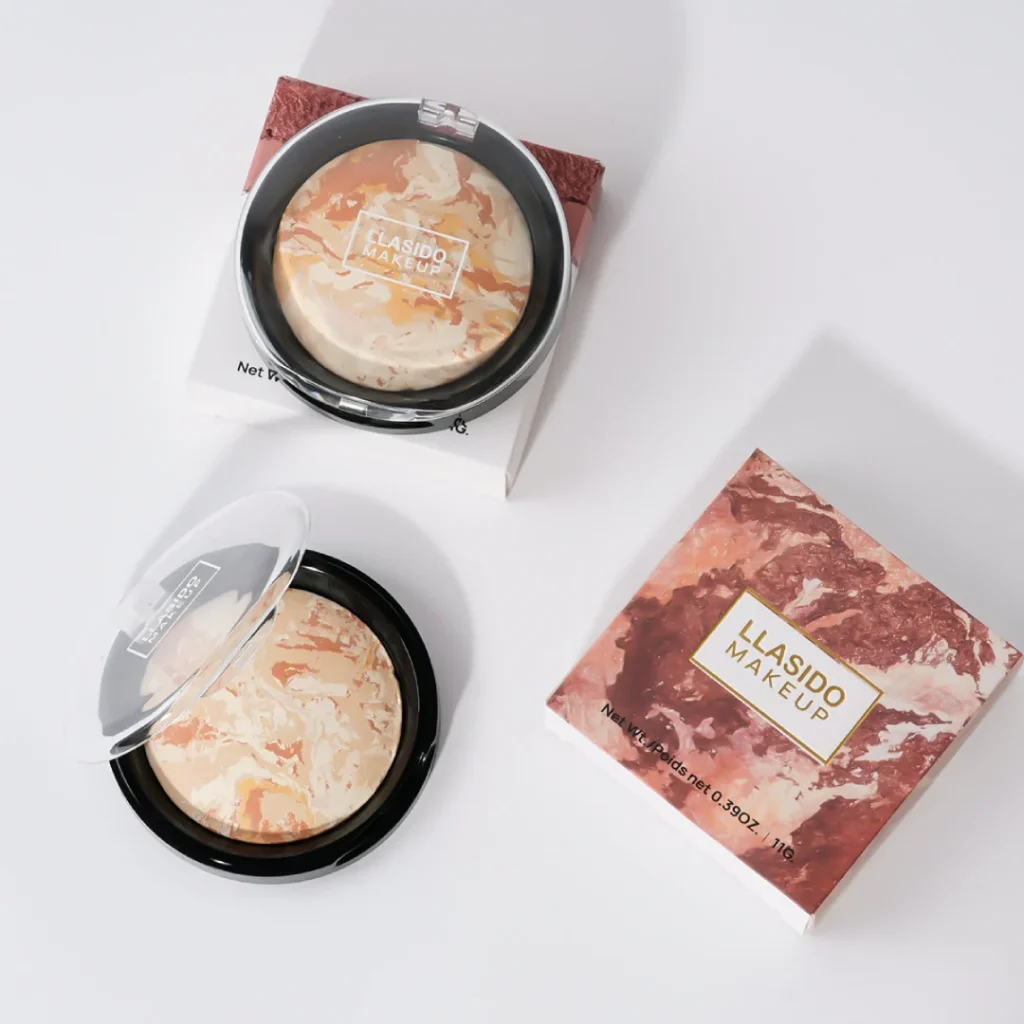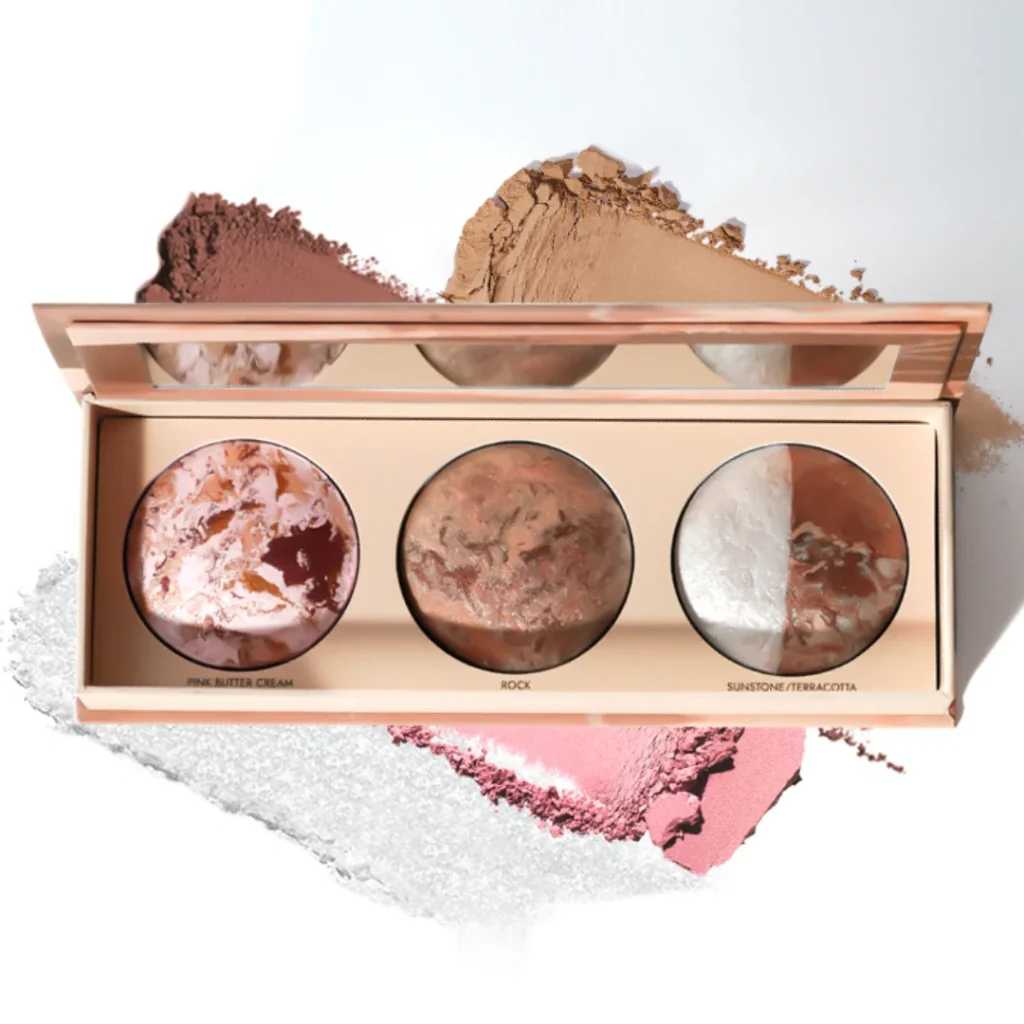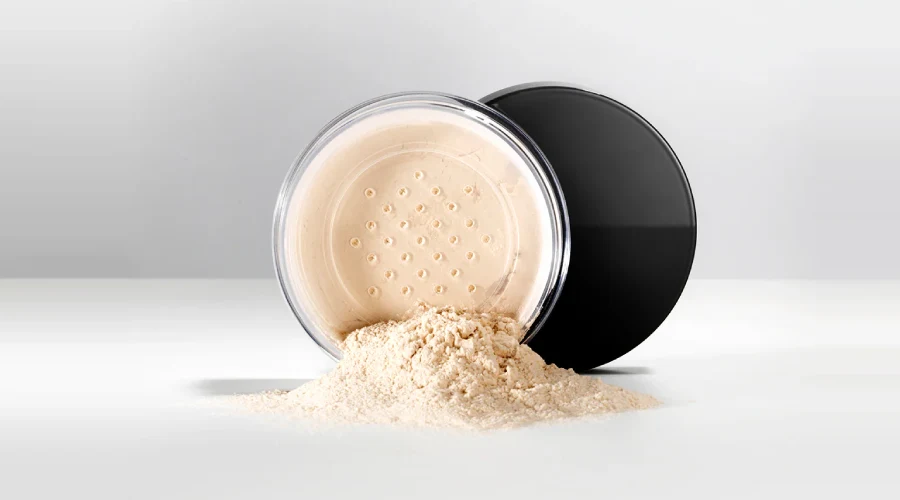Skincare and makeup are closely linked, but they serve different purposes. Skincare creates a balanced, clean surface, while makeup enhances appearance and offers temporary protection. Knowing their interaction helps achieve a smooth finish and supports long-term skin health.
How skincare prepares the skin for makeup application
Skincare forms the foundation for any makeup routine. Cleansing removes dirt and oil, creating a clean canvas. Following with toner or serum helps balance moisture and preps the skin to accept products evenly. Without proper skincare, makeup can settle into pores or fine lines.
Hydration is key. Moisturizers or light creams allow makeup to glide smoothly while preventing dry patches. In one clinic study, participants who skipped moisturizer showed uneven foundation coverage and increased flaking (Journal of Cosmetic Science, 2020). Proper preparation ensures that makeup looks uniform and lasts longer.
Makeup’s role in enhancing and protecting the skin temporarily
Makeup doesn’t just change appearance; it adds a temporary layer over the skin. Foundations, primers, and powders create a barrier that can reduce minor environmental impacts like dust or pollution. However, this protection is short-term and depends on the integrity of underlying skincare.
For example, a person applying foundation over dry or untreated skin may notice cracking or patchiness. Makeup interacts with oils and moisture, so its performance relies heavily on what’s beneath. Think of makeup as a thin shield—it enhances the look but doesn’t replace skincare.
Why order matters for skin health and appearance
The sequence of skincare and makeup affects both appearance and skin condition. Applying makeup before cleansing or moisturizing can trap dirt and irritants, leading to breakouts or uneven texture. Conversely, following a structured skincare routine first ensures a smooth surface for makeup and helps maintain skin health over time.
A real-world scenario: in professional photo shoots, models always prep their skin before makeup. This approach prevents foundation from separating under lights and allows makeup artists to achieve a flawless finish. Order isn’t arbitrary; it’s a combination of science, texture, and timing that ensures the best results.
The Basics of Skincare: What to Apply First
Starting your skincare routine in the correct order is crucial before applying makeup. Each product has a role, and applying them in sequence ensures maximum absorption and effectiveness. Proper preparation helps makeup sit evenly and prevents common issues like patchiness or pilling.
Cleansers: removing impurities before any product
Cleansing is the first and most essential step in any skincare routine. It removes dirt, oil, and environmental pollutants that accumulate overnight or throughout the day. Without cleansing, makeup can trap impurities, leading to clogged pores or uneven application.
A gentle, water-soluble cleanser is ideal for daily use. In a study by the International Journal of Cosmetic Science (2019), participants using a consistent cleansing routine showed improved foundation adherence and fewer skin irritations. Clean skin provides a stable base for hydration and treatment products.
Toners and essences: balancing and hydrating the skin
After cleansing, toners or essences help restore the skin’s pH and add a layer of hydration. These products allow subsequent serums or moisturizers to penetrate more effectively. Skipping this step may leave skin feeling tight or uneven, which can affect makeup texture.
Lightly patting the toner or essence into the skin improves absorption. Some formulations contain humectants, which draw moisture into the skin, creating a supple surface. This hydration makes foundation and concealer glide smoothly without clinging to dry patches.
Serums and treatments: targeting skin concerns effectively
Serums and treatment products come next, as they contain concentrated active ingredients. Whether addressing acne, pigmentation, or fine lines, applying these before moisturizer ensures better penetration and performance.
Timing is important. Some actives, like vitamin C or hyaluronic acid, work best on clean, hydrated skin. Applying them in the correct order prevents interference with makeup and maximizes the benefits of both skincare and cosmetic products. Regular use builds a healthier base for long-term makeup wear.
Moisturizers and Sunscreens: The Bridge to Makeup
Moisturizers and sunscreens are the final skincare steps before makeup. They create a protective and hydrated surface that allows makeup to apply evenly and last longer. Skipping either can lead to patchy foundation, dry spots, or reduced sun protection.
Why hydration is essential before makeup
Hydration ensures the skin is plump and smooth, providing an even canvas for makeup. Moisturizers fill in fine lines and prevent powder or foundation from clinging to dry patches. Without proper hydration, makeup can appear flaky or uneven.
Even light lotions can make a difference. In clinical studies, participants who applied moisturizer before foundation showed improved makeup longevity and fewer visible cracks (Journal of Cosmetic Dermatology, 2021). Hydrated skin also feels more comfortable throughout the day.
How sunscreen interacts with foundation and primers
Sunscreen is essential for daily protection, but it can affect makeup application if not layered correctly. Chemical or mineral sunscreens may create a slightly slippery surface, which can influence primer adhesion or foundation finish.
To prevent issues, allow sunscreen to absorb fully for a few minutes before applying primer or foundation. This helps avoid streaking, pilling, or uneven coverage, ensuring both sun protection and a flawless cosmetic finish.
Layering techniques for maximum protection and smooth finish
Start with a thin layer of moisturizer, followed by an even application of sunscreen. Once absorbed, use a primer to smooth the surface before applying foundation. This sequence preserves skin hydration, protects from UV damage, and improves makeup wear.
Gentle patting or rolling motions help products blend without disturbing previous layers. By respecting the absorption time and order, you create a well-prepared base that supports both skin health and cosmetic performance throughout the day.
Makeup Foundations: Where They Fit in the Routine
Foundations are the core of a makeup look, but their performance depends on the skincare applied beforehand. Proper layering ensures smooth coverage, prevents uneven texture, and extends wear time.
Primers: enhancing skin texture and longevity of makeup
Primers act as a bridge between skincare and foundation. They fill in fine lines, smooth uneven textures, and create a uniform surface for foundation. Using a primer over moisturized skin prevents makeup from sliding or separating during the day.
Some primers also control oil or add hydration depending on skin type. Applying them evenly with fingertips or a brush ensures the foundation adheres properly. Skipping primer can lead to patchiness, especially on areas with enlarged pores or dryness.
Liquid, powder, and cream foundations
The type of foundation you choose—liquid, powder, or cream—performs best on skin that has been cleansed, hydrated, and primed. Liquid foundations glide over moisturized skin, powders sit evenly on primed surfaces, and creams blend smoothly without tugging.
Applying foundation in thin layers helps prevent caking. Using the right tools—brush, sponge, or fingers—further ensures even coverage. Well-prepared skin allows makeup to look natural, avoid streaking, and last longer under various conditions.
Common mistakes when layering makeup over skincare
A frequent error is applying foundation immediately after thick creams or sunscreen without giving them time to absorb. This can lead to pilling, streaks, or uneven patches. Another mistake is overusing primers or mixing incompatible products, which may cause makeup to separate during wear.
To avoid these issues, allow each layer of skincare to settle before moving on to makeup. Less is often more—thin, well-absorbed layers provide a better surface than heavy, unblended applications. Proper sequencing ensures both healthy skin and a flawless makeup finish.
Special Skincare Considerations Before Makeup
Not all skin types respond the same way to skincare and makeup. Adjusting the order and choice of products based on individual needs ensures that makeup sits well and that the skin remains healthy.
Oily, dry, and combination skin: adjusting the order
Skin type influences how products should be layered. For oily skin, lightweight moisturizers and oil-free primers help prevent excess shine while still prepping the skin. Dry skin benefits from richer creams and hydrating primers to avoid flaky foundation.
Combination skin requires balancing both needs—moisturizing dry areas while controlling oil in the T-zone. Applying targeted products strategically ensures an even base for makeup without compromising skin health. Skipping these adjustments can lead to patchy coverage or discomfort.
Sensitive skin and reactive products
Sensitive skin reacts more easily to certain ingredients in skincare and makeup. Fragrances, strong acids, or high-alcohol toners can cause redness or irritation, which makeup may further accentuate. Choosing mild, hypoallergenic products in the right sequence reduces these risks.
A practical approach is to apply a thin layer of moisturizer and wait a few minutes before adding primer or foundation. This lets the skin settle and prevents reactions. Testing new products on a small area before full application is a simple but effective precaution.
>> Choosing the Right Makeup for Your Skin: Flawless Application
Timing between treatment products and makeup application
Treatment products like vitamin C, retinol, or exfoliating acids require careful timing. Applying makeup immediately after these can reduce effectiveness or cause pilling. Experts recommend waiting at least 5–10 minutes after treatments for absorption.
This pause ensures that actives penetrate the skin rather than mixing with makeup. For morning routines, lightweight serums and moisturizers that absorb quickly are ideal, providing both skincare benefits and a smooth surface for foundation. Proper timing maximizes both treatment efficacy and makeup performance.
How Skincare Ingredients Affect Makeup Performance
The ingredients in your skincare can significantly influence how makeup applies and wears throughout the day. Hydration, texture, and chemical interactions all play a role.
Hydrating vs. occlusive ingredients
Hydrating ingredients, such as hyaluronic acid or glycerin, pull moisture into the skin and create a plump, even surface. These ingredients make foundation glide easily and reduce dry patches.
Occlusive ingredients, like petrolatum or heavy oils, form a barrier that locks in moisture but can make makeup slide or separate. Applying foundation over thick occlusives can result in uneven coverage or reduced wear. Balancing hydration and occlusion is key for smooth application and comfort.
Active ingredients like retinol, acids, and vitamin C
Actives can affect how makeup interacts with the skin. Retinol or exfoliating acids increase cell turnover, which may leave skin temporarily sensitive or slightly textured. Vitamin C serums can react with certain foundations, especially those with high pH formulas, leading to streaking or color shifts.
Timing and absorption are essential. Apply these actives first and wait for full absorption before makeup. This minimizes interference and preserves the effectiveness of both the skincare and the cosmetic products.
Avoiding pilling and incompatibilities
Pilling occurs when layers of skincare and makeup don’t absorb properly, creating small flakes or balls on the skin. It often happens when heavy creams, silicone-based primers, or certain serums overlap with water-based foundations.
To avoid incompatibilities, use thin layers and allow each product to settle. Patch testing combinations before full-face application is recommended. A careful routine ensures smooth makeup, better longevity, and no unwanted texture issues.
Myths and Misconceptions About Skincare and Makeup Order
Many people misunderstand how skincare and makeup interact. Following myths can lead to ineffective routines, skin irritation, or uneven makeup.
“Makeup can replace skincare” myth
A common misconception is that makeup alone can protect or nourish skin. While foundation and primers provide a temporary barrier, they don’t replace cleansing, hydration, or active treatments. Skincare delivers long-term benefits that makeup cannot replicate.
Relying solely on makeup can trap dirt, oils, and pollutants against the skin, increasing the risk of breakouts or irritation. Think of makeup as an enhancer, not a substitute for proper skin preparation.
Layering too many products before makeup
Another myth is that more layers mean better results. Overloading the skin with multiple creams, serums, and primers can cause pilling, reduced absorption, and uneven foundation application.
Light, well-absorbed layers work better than thick combinations. Experts recommend prioritizing essential skincare steps—cleanse, hydrate, treat, and protect—before applying makeup. Excessive layering often harms both the skin and the cosmetic finish.
Morning vs. night routines: different priorities
Skincare routines differ depending on the time of day. Morning routines focus on hydration, protection, and a smooth surface for makeup, while evening routines prioritize repair and active treatments.
Applying night-only products like retinol before makeup can cause irritation or reduce effectiveness. Understanding these differences ensures that both your skin and makeup perform optimally without conflicting results.
>> How to Start Using Foundation: A Complete Beginner’s Guide
Expert Tips for a Seamless Skincare-to-Makeup Transition
Transitioning from skincare to makeup requires attention to timing, technique, and product compatibility. Small adjustments can prevent pilling, streaking, or uneven application while maintaining skin health.
Waiting times between products for best absorption
Each skincare layer needs time to absorb fully before makeup. Moisturizers, sunscreens, and serums should sit on the skin for a few minutes to avoid slipping or mixing with foundation.
Rushing this step can lead to streaks, pilling, or uneven coverage. Experts suggest observing the skin—once it feels lightly tacky or smooth, it’s ready for the next layer. This simple pause improves both makeup performance and the effectiveness of skincare ingredients.
Tools and techniques to apply makeup over hydrated skin
Proper tools help makeup glide over hydrated skin without disturbing underlying layers. Sponges, brushes, or fingers can be used depending on the foundation type, but gentle patting and rolling motions are ideal.
For example, a damp beauty sponge applies liquid foundation evenly while blending moisturizer and primer into the skin. Avoid harsh rubbing, which can lift products and create patches. Correct technique ensures a polished finish and preserves the skincare benefits underneath.
Quick routines without compromising skin health
Busy mornings don’t have to compromise skin or makeup results. Using multi-functional products like tinted moisturizers with SPF or lightweight primers can streamline the routine.
Even in a shortened routine, following the basic order—cleanse, hydrate, protect, then makeup—maintains skin integrity. Quick routines work best when absorption times are respected and each product is applied thoughtfully, allowing for healthy, long-lasting makeup.
Morning vs. Evening Routines: When Makeup Order Changes
Skincare routines vary between morning and evening, mainly because makeup is usually only applied in the daytime.
Nighttime skincare without makeup
Evening routines focus on repair and restoration rather than cosmetic appearance. Cleansing, serums, and moisturizers target hydration, cell turnover, and skin concerns like pigmentation or fine lines.
Since no makeup is applied, heavier creams or active ingredients can be used without worrying about compatibility or pilling. This period allows the skin to absorb potent actives and recover from environmental stressors accumulated during the day.
Morning skincare for a polished look
Morning routines are designed to prepare skin for makeup while protecting it from environmental factors like UV rays and pollution. Cleansing, lightweight hydration, and sunscreen are essential first steps.
Primers and makeup follow only after products have absorbed. Following this order ensures smooth foundation application, reduces the risk of streaking or separation, and maintains the effectiveness of daytime protective ingredients.
How seasonal changes affect layering and order
Seasons impact both skincare absorption and makeup performance. Cold, dry weather may require richer moisturizers to prevent flaking under foundation, while hot, humid conditions call for lighter layers to avoid excess oil and makeup sliding.
Adjusting the sequence and thickness of products according to climate ensures both skin comfort and cosmetic longevity. Observing how the skin reacts to seasonal changes helps maintain a balanced routine year-round.
Conclusion
Understanding what comes first, makeup or skincare, is key to both skin health and a flawless look. Properly layering cleansers, treatments, moisturizers, and sunscreen creates a smooth, protected canvas. Following the right order ensures makeup applies evenly, lasts longer, and supports long-term skin wellness.
Frequently asked questions
Can I apply makeup immediately after skincare?
It’s best to wait a few minutes after applying skincare products like moisturizers, serums, or sunscreen before makeup. Waiting ensures proper absorption, prevents pilling, and allows foundation and primers to adhere evenly. Immediate application can lead to streaks or uneven texture.
Does using too many skincare products affect makeup?
Yes, layering too many creams, serums, or treatments can interfere with makeup application. Excess product may cause foundation to slide, streak, or pill, and can also reduce the effectiveness of active ingredients. Light, well-absorbed layers work better for a smooth finish.
How does oily skin impact the order of skincare and makeup?
For oily skin, lighter, oil-free moisturizers and mattifying primers are recommended before foundation. Applying heavy creams first can make makeup slide or separate. Adjusting product type and order helps control shine and maintains even coverage throughout the day.
Can active ingredients like retinol or acids be used before makeup?
Active ingredients should generally be applied well before makeup to allow absorption and minimize irritation. Retinol, strong acids, or vitamin C can interact with foundations or primers, leading to pilling, streaking, or reduced effectiveness if applied too close to makeup.
How does skin hydration affect makeup longevity?
Well-hydrated skin provides a smooth, plump surface, allowing foundation and concealer to glide evenly. Dry or dehydrated skin can cause makeup to cling to flakes or lines, reducing wear time. Proper hydration ensures longer-lasting, natural-looking results while protecting skin.







